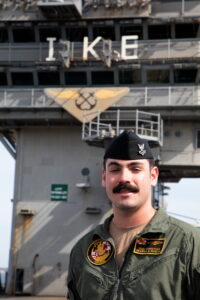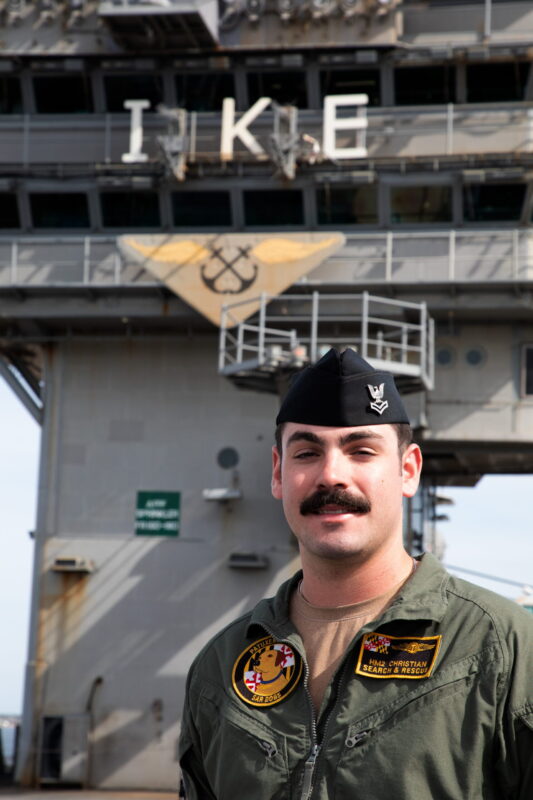 Hospital Corpsman 2nd Class Bradley Christian, a native of Mexia, Texas, deployed as part of the Navy’s first En-Route Care System (ERCS) medical expeditionary capability aboard the Eisenhower Carrier Strike Group (IKECSG) on a regularly scheduled deployment, Oct. 14.
Hospital Corpsman 2nd Class Bradley Christian, a native of Mexia, Texas, deployed as part of the Navy’s first En-Route Care System (ERCS) medical expeditionary capability aboard the Eisenhower Carrier Strike Group (IKECSG) on a regularly scheduled deployment, Oct. 14.
Christian, who is assigned to Navy Medicine Readiness and Training Command (NMRTC) Patuxent River, is a part of a 2-person ERCS team with an integrated intensive care mobile unit that supports medical care for up to one-to-two critically injured or ill patients at a maximum of eight hours during transport.
He is a 2019 graduate from Cypress Ridge High School in Houston and has two uncles who have previously served in the military.
Today, he is a search and rescue (SAR) medical technician with the NAS Patuxent River “SAR Dogs,” which is responsible for SAR support to the research, development, test, and evaluation (RDT&E) mission at NAS Patuxent River.
“We are here to mainly support the medical evacuation capability in order to prepare patients for flying,” said Christian, who volunteered to deploy on a ship for the first time in his naval career to support the ERCS. “We also have the opportunity to provide training aboard ship and integrate with the medical teams.”
The ERCS will be a component of the overall skills and readiness within the medical department aboard Nimitz-class aircraft carrier USS Dwight D. Eisenhower (CVN 69).
“We are excited to expand the strike group’s medical response capabilities with the addition of ERCS,” said Cmdr. Jason Condino, the IKECSG senior medical officer. “This allows us the ability to evacuate critically ill patients while maintaining full medical capabilities back on the ship. Implementation of this team aboard IKE aligns with long-term plans to meet fleet-wide requirements in support of distributed maritime operations.”
The ERCS provides patient assessment and treatment, ventilation support, physiological monitoring, intravenous therapy, medication administration, supplemental oxygen therapy, airway maintenance, head and limb immobilization, and resuscitation and hemorrhage control.
“The life support system that we have provides everything we need for patient care in one unit,” Christian explained. “We previously flew with separate units, but now this will help tremendously with being able to move patients more efficiently.”
As Christian and other sailors continue to train and perform missions, they take pride in serving their country in the Navy.
“Hearing my parents tell me that they are proud of me, gives me a sense of pride by serving in the Navy,” reflected Christian.
The Navy’s ERCS program has achieved its initial operating capacity and provides a ready, rapidly deployable and combat effective medical force to improve survivability across the full spectrum of care, regardless of environment.
Navy Medicine — comprised of approximately 44,000 highly-trained military and civilian health care professionals — provides enduring expeditionary medical support to the warfighter on, below, and above the sea, and ashore.



